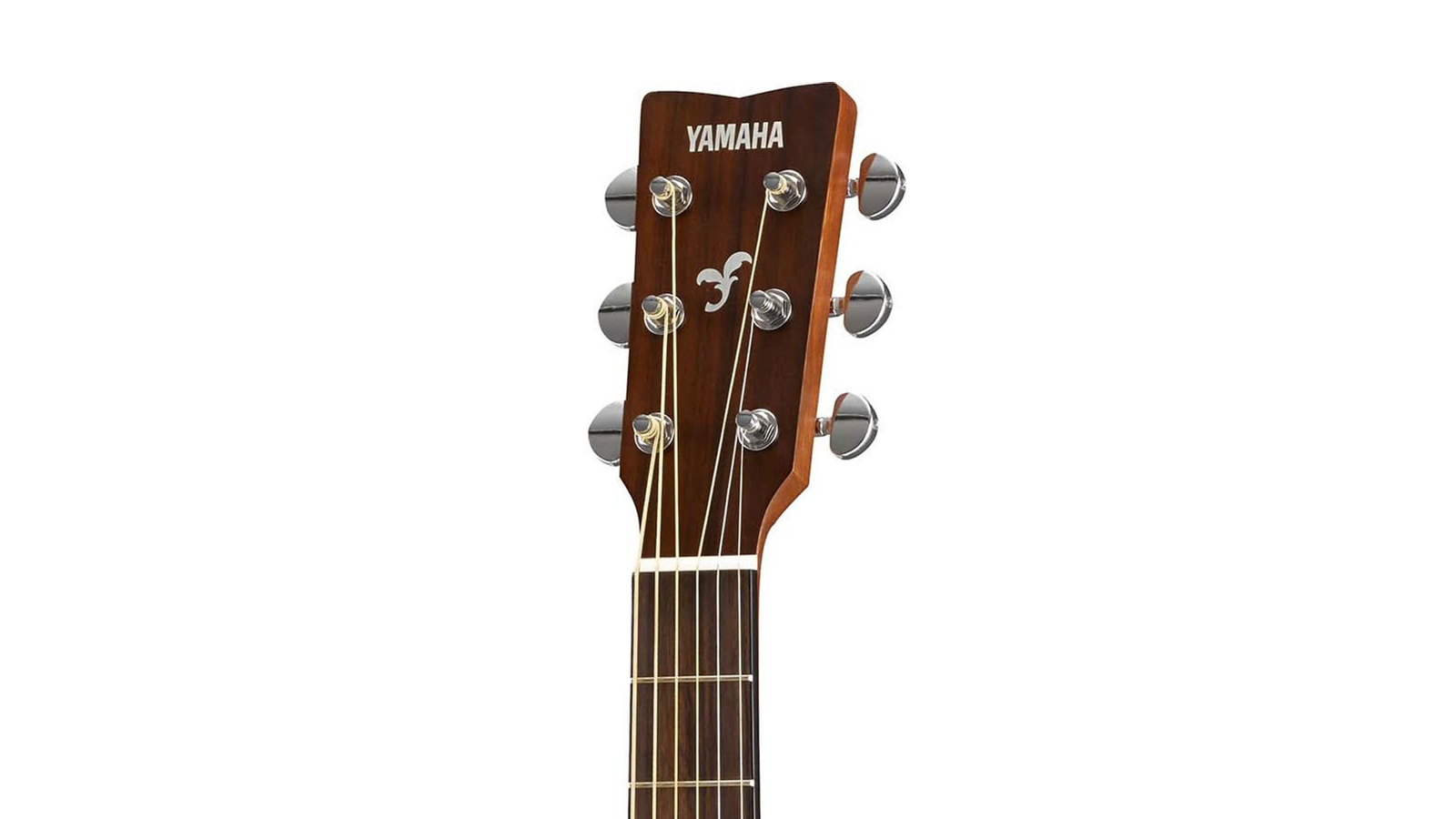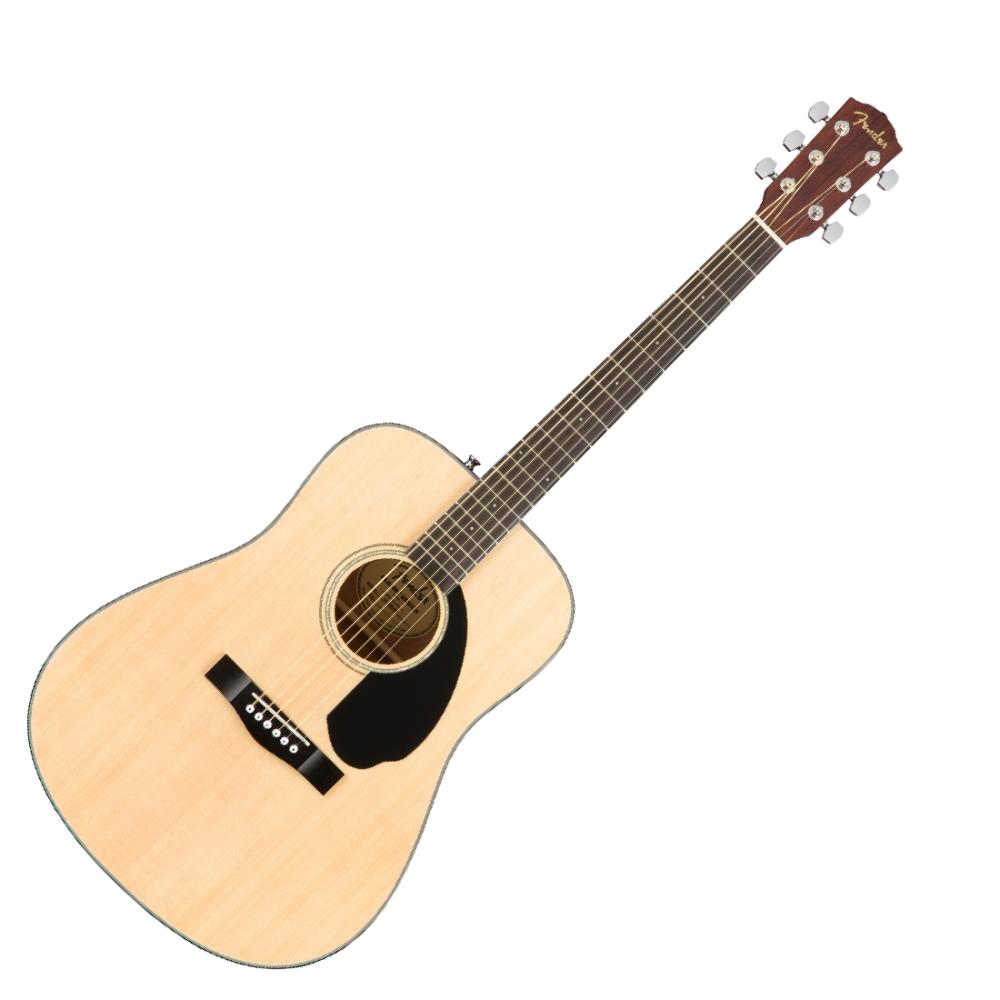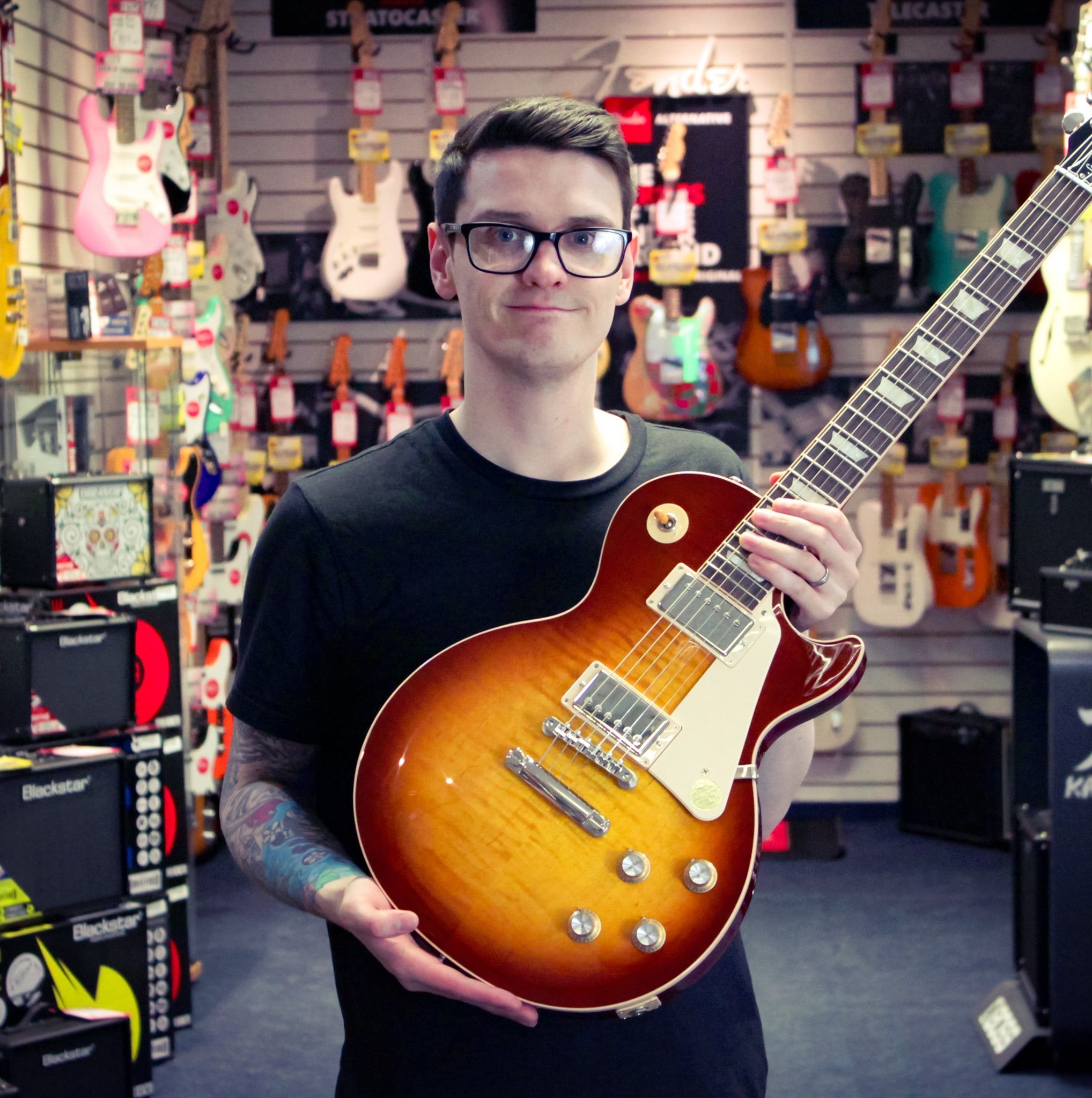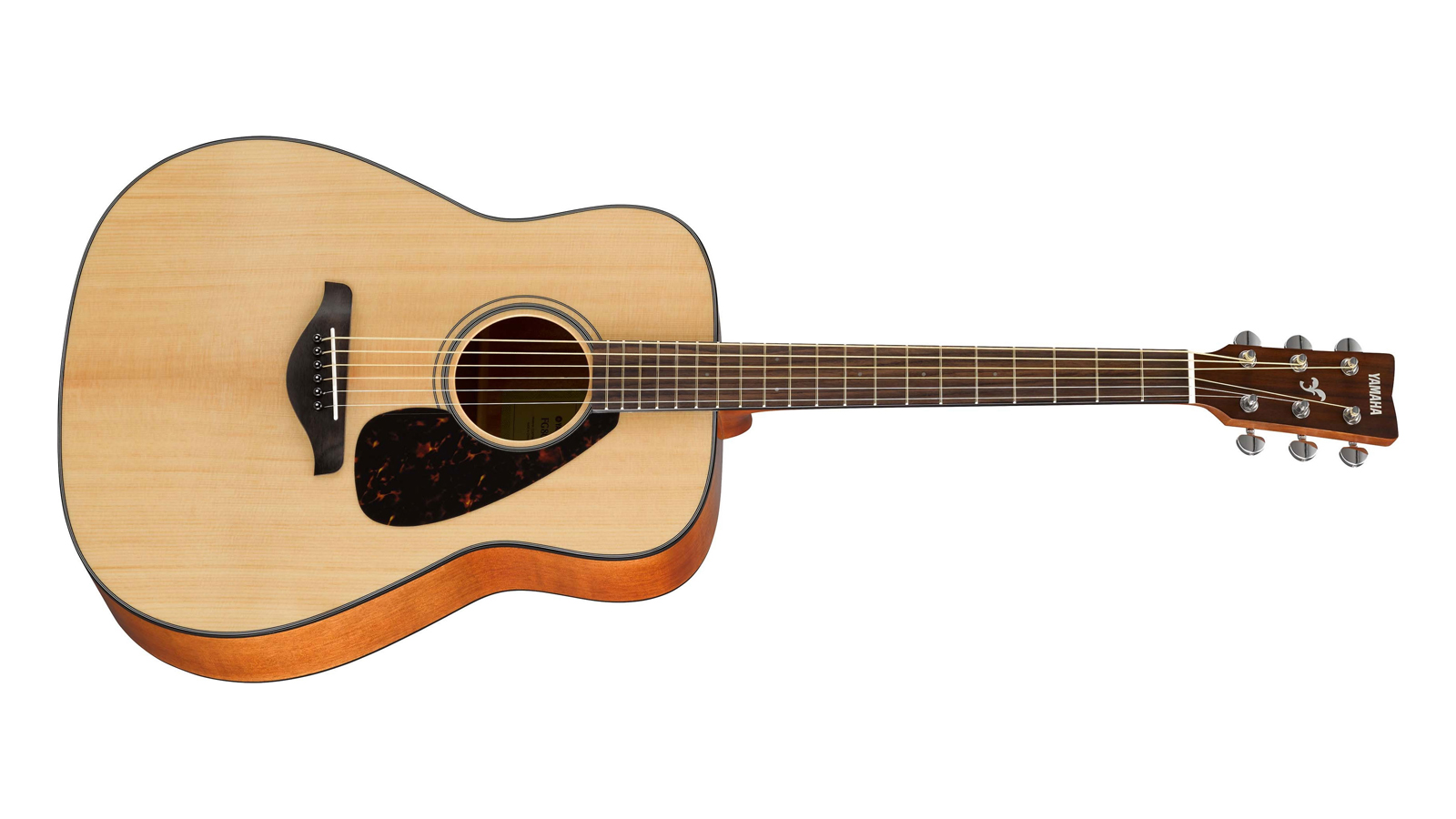Guitar World Verdict
There’s no doubt about it, the Yamaha FG800 is one of the greatest beginner acoustic guitars of all time. Its solid top helps deliver a rich, full-bodied tone usually reserved for more expensive instruments. In addition, the smooth neck is comfortable, extremely playable, and perfect for players at the beginning of their musical journey.
Pros
- +
Solid top
- +
Scalloped bracing
- +
Superb build quality
- +
Gloss body, matte neck
Cons
- -
Dreadnought body may be too big for younger players
- -
No pickup
You can trust Guitar World
At this point, the Yamaha FG800 doesn’t really need much of an introduction. This is because the FG series has seen a longevity other guitars could only dream of. Originally released way back in 1966, the FG has been a constant staple of the beginner acoustic guitar market since its debut.
Now, things have moved on a fair bit since then, and the line has expanded significantly. As of writing this, Yamaha currently offers 19 different guitars under the FG banner. Arguably the most popular among them is the reigning king of the budget dreadnought field - the FG800.
This guitar may be at the bottom end of the price bracket – and referred to as Yamaha’s standard acoustic model – but that hasn’t stopped Yamaha from kitting it out with more premium features. For example, the inclusion of a solid spruce top may surprise many players who are used to seeing all laminate guitars at this price point.
- Explore more of the best Yamaha acoustic guitars

So for those who aren’t in the know, what does this mean? Well, very simply put, a laminate top is made of various pieces of wood sandwiched together to create the face of the guitar.
Now, this may result in a strong guitar, but the tone won’t be as clear, punchy, or as articulate. A solid top, on the other hand – as you might have guessed – is made from one solid piece of wood, resulting in a much more desirable tone. This is notable in the case of the FG800 because the price bracket it occupies isn’t exactly populated with solid top instruments. Therefore it’s a very welcomed addition.
This coupled with the large dreadnought size - although Yamaha calls it a Traditional Western Body - means there’s plenty of volume to be had from the FG800. Perhaps not the greatest feature when you are just starting out, and you don’t want everyone in the house to hear you mess up the intro to Sweet Home Alabama for the 100th time. That said, a loud guitar is a clear sign of a well-built instrument, and the projection here puts some more expensive offerings to shame.
Contributing to the excess volume has to be the added scalloped-bracing, a newer feature added to the line in 2016. This allows the top to move more freely, increasing the bass response.
All the latest guitar news, interviews, lessons, reviews, deals and more, direct to your inbox!

Fender CD60S: Coming in around the same price, the Fender CD60S is another solid top dreadnought aimed squarely at the beginner guitarist.
Yamaha FS800: If you find the bulky frame of the dreadnought too much to get your arm around, or perhaps you’re looking for a less boomy sound, then it’s worth trying the smaller body of the Yamaha FS800.
Overall the tone of the Yamaha is rich, warm, and rounded. It may lack a little bit of high-end sizzle, but let’s be fair, for this price, you really can’t complain - it will certainly find favor with those looking for that classic dreadnought sound on a shoestring budget.
The Nato and Okume back and sides may sound exotic, but in reality, they look very much like the standard mahogany found on many other acoustic guitars - albeit a little more orange on some examples.
This, paired with the natural top, results in a classically handsome acoustic that may not look the most exciting but is something you won’t get bored of in a few weeks - cheap blue or red finish acoustics, we’re looking at you. For those who aren’t a fan of the gloss top, then it’s worth looking at the FG800M, which is exactly the same in every way apart from the matt finish.

In terms of playability, this guitar is exactly what you’d expect from the instrument giant that is Yamaha. The neck feels smooth and well finished. The profile is rounded but thin enough for most beginners to get their hands round, and there are no fret issues to report.
Straight out of the box, the FG800 is incredibly playable, and most players will find it comfortable. For those who may not be drawn to the large size of the dreadnought, then it’s worth considering the Yamaha FS800.
This takes the features seen here in the FG but shrinks down the body into a much more manageable size. This may be a particularly good option for younger players (for more options, take a look at our guide to the best guitars for kids).
The rest of the fittings, such as the die-cast machine heads and rosewood bridge, feel solid. Although nothing to write home about, they feel serviceable, and as we’ve seen on some other entry-level guitars, this isn’t always the case.
Verdict
If you were to ask most players what they’re looking for in a guitar – regardless of budget – they’ll most likely say it needs to be reliable, comfortable, and sound fantastic. Well, the Yamaha FG800 ticks all of those boxes with the added benefit of coming in around the $/£200 mark.
The solid top and large dreadnought body deliver a rich, full-bodied tone usually reserved for more expensive instruments. You’ll be hard-pressed to find a better quality guitar with these specs at a better price. That’s why the Yamaha FG800 has to be one of our favorite beginner acoustics out there right now.
Yamaha FG800 Specifications
- Body Type: Traditional Western
- Top: Solid Spruce
- Back and sides: Nato/Okume
- Neck: Nato
- Scale: 25.9/16"
- Fingerboard: Rosewood
- Frets: 20
- Tuners: Die-cast Chrome (TM29T)
- Left-handed: Yes
- Finish: Gloss Body/Matt Neck
- Contact: Yamaha

Daryl is a Senior Deals Writer at Guitar World, where he creates and maintains our 200+ buyer's guides, finds the best deals on guitar products, and tests the latest gear. His reviews have been featured in prominent publications like Total Guitar, Guitarist, Future Music magazine, and MusicRadar.com.
During his career, he has been lucky enough to talk to many of his musical heroes, having interviewed Slash and members of Sum 41, Foo Fighters, The Offspring, Thrice, and more. In a past life, Daryl worked in music retail. For a little under a decade, he advised everyone from absolute beginners to seasoned pros on the right gear for their needs.
Daryl is a fully qualified sound engineer, holding a first-class Bachelor's degree in Creative Sound Production from the University of Abertay.


